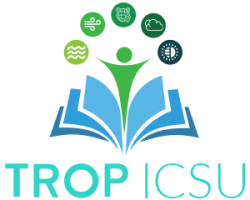Statistical Methods to Determine Trends in Hurricane Intensity

Statistical Methods to Determine Trends in Hurricane Intensity Classroom/Laboratory Activity A classroom/laboratory activity to learn about linear slope, trends, confidence intervals, and Student’s t-distribution by calculating trends and uncertainties using hurricane data records over 40 years. Using hurricane-related data for the Atlantic Ocean, students will plot graphs and determine trends by calculating linear slope. They […]
Analyzing Climate Science Data through Simple Statistical Techniques

Analyzing Climate Science Data through Simple Statistical Techniques Teaching Module A teaching module that demonstrates the use of linear and quadratic regression to analyze Arctic sea ice extent data and the use of graphs, sample correlations, and multiple regression to analyze atmospheric CO2 level data, solar irradiance data, and average global temperature data. In the […]
Climate Change and the American Pika

Climate Change and the American Pika Video A video that explains the impact of climate change on the habitat and population of a species (specifically, the American Pika) and explores whether this species could be used as an indicator of climate change. Students will learn about climate-related factors that are important for the survival of […]
Greenhouse Gases and Infrared Radiation

Greenhouse Gases and Infrared Radiation Model/Simulator A model/simulator to understand the effect of greenhouse gases on outgoing energy flux, and to compare the absorption of infrared radiation by various greenhouse gases such as carbon dioxide (CO2), methane (CH4), and water vapour. Students will modify various parameters such as the concentrations of greenhouse gases, temperature, atmospheric […]
A Single-layer Atmosphere Model to Explain Atmospheric Warming

A Single-layer Atmosphere Model to Explain Atmospheric Warming Reading A reading to learn about the energy balance of planet Earth and to understand atmospheric warming by using a single-layer atmosphere model. Students will learn about emissivity and absorptivity. Further, they will learn about the greenhouse effect of the atmosphere by calculating the temperature of a […]
Orbital Forcing and Earth’s Climate

Orbital Forcing and Earth’s Climate Teaching Module A set of classroom/laboratory activities to reconstruct Earth’s past climate using isotopic composition data from ice cores and to highlight the influence of orbital forcing and atmospheric carbon dioxide feedback on Earth’s climate. Students will reconstruct Earth’s past temperatures by plotting graphs of isotopic compositions from ice cores […]
Oceans, Ocean Circulation and Sea Surface Temperatures

Oceans, Ocean Circulation and Sea Surface Temperatures Video A video lecture by Raghu Murtugudde, University of Maryland that introduces basic concepts in oceanography. This video lecture is part of a MOOC titled ‘Climate Change’ and has been developed by the National Resource Centre on Climate Change at the Indian Institute of Science Education and Research […]
Radiation Laws

Radiation Laws Video A video lecture titled, ‘Atmospheric radiation – Radiation laws’ from the e-learning course, ‘Introduction to Atmospheric Science’ developed by C Balaji, IIT Madras, for National Programme on Technology Enhanced Learning (NPTEL), India. This video lecture includes discussions on various aspects of radiation, atmospheric radiation and the radiation laws. Students will be introduced […]
The Greenhouse Effect of the Atmosphere

The Greenhouse Effect of the Atmosphere Video A video micro-lecture that discusses Earth’s energy balance and the greenhouse effect of the atmosphere. Students will learn how to determine the surface temperature of planet Earth with no atmosphere and with 1- and 2-layer atmosphere. They will also understand the greenhouse effect of the Earth’s atmosphere. Use […]
Upwelling

Upwelling Video A microlecture (video) that introduces the topic of upwelling in oceans and how the direction of motion of water in the oceans is influenced by the Coriolis Effect. Students will learn how the Coriolis Effect on the Trade Winds at the equator influences the movement of surface water in the oceans causing an […]


